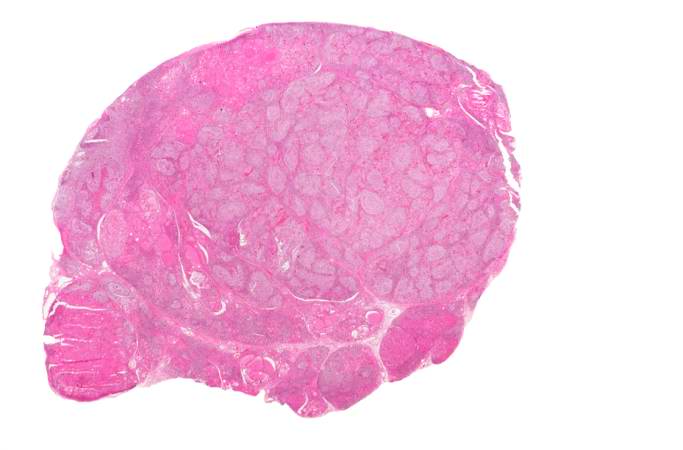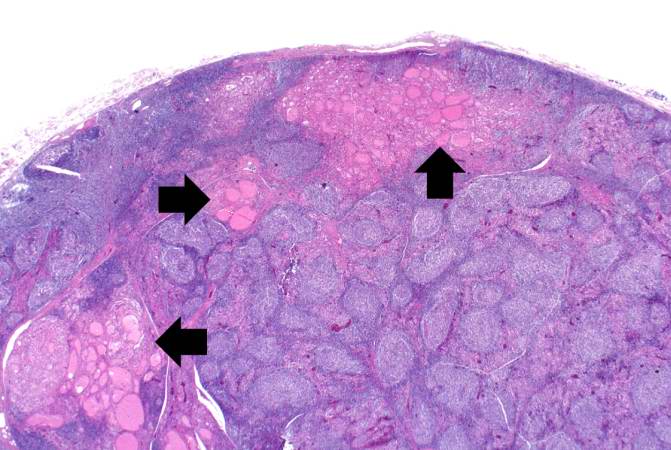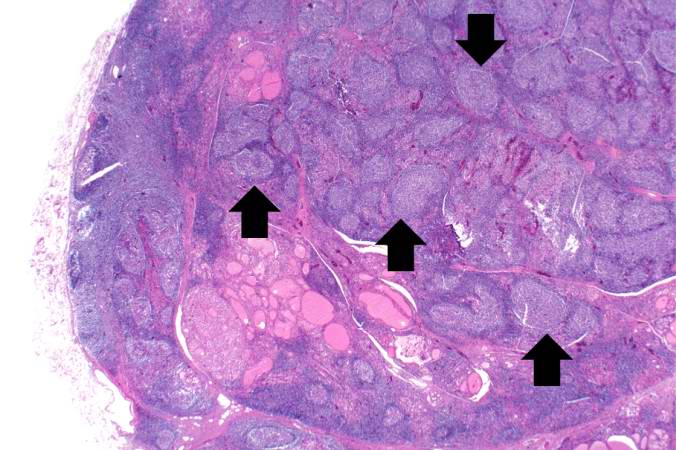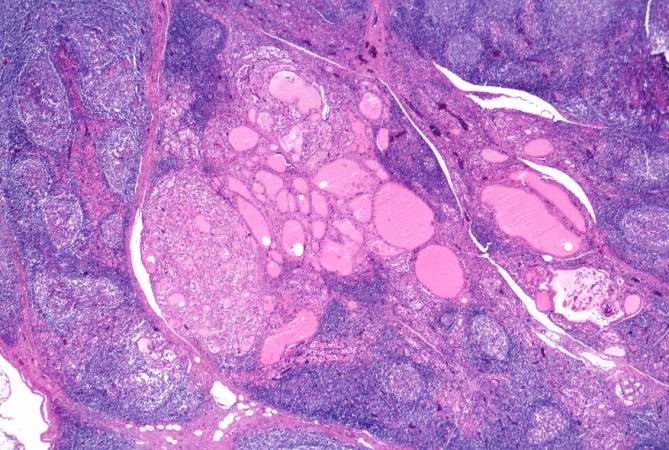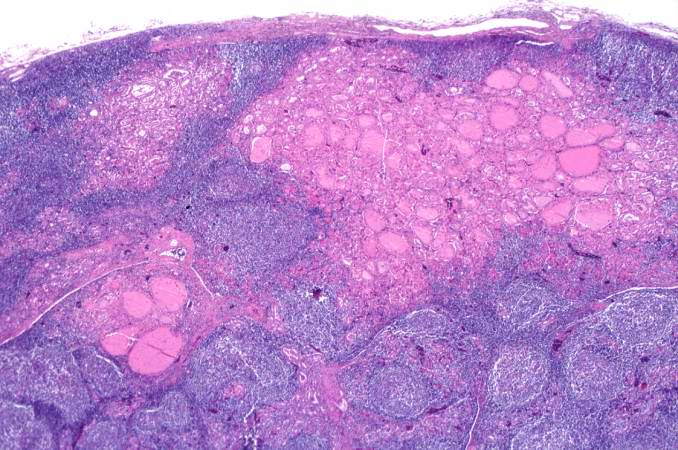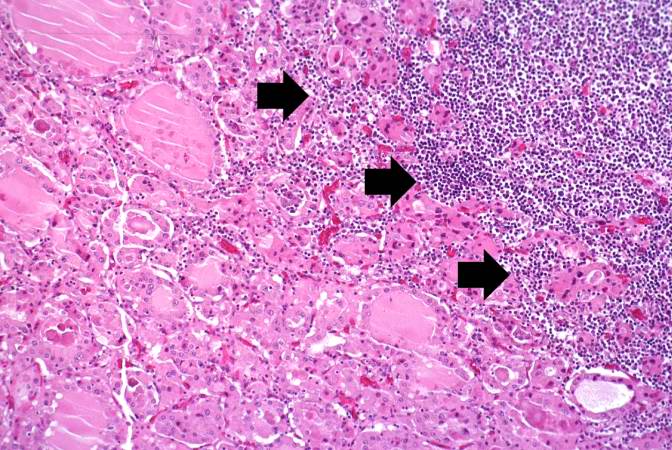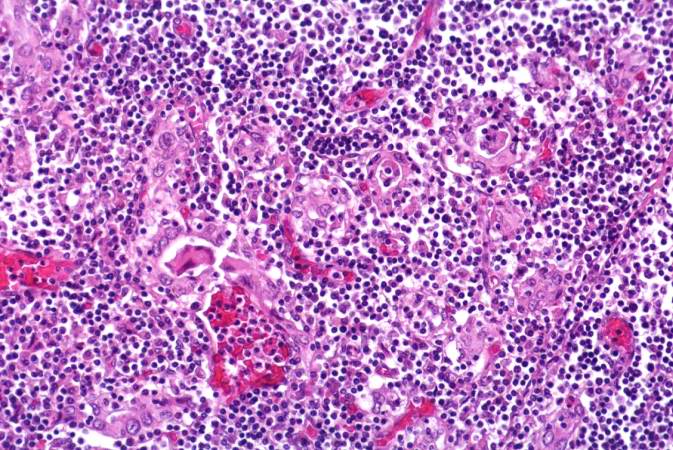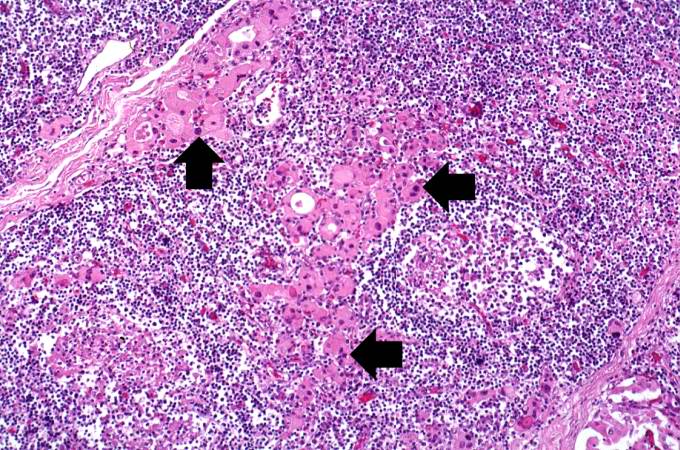Hashimoto's thyroiditis other diagnostic studies: Difference between revisions
No edit summary |
|||
| Line 7: | Line 7: | ||
==Other Diagnostic Studies== | ==Other Diagnostic Studies== | ||
===Gross Pathology=== | ===Gross Pathology=== | ||
The gland is usually diffusely enlarged, firm, and slightly lobular. The capsule is intact, and the cut surface is light tan and has a slight lobular pattern. Microscopically there is massive infiltration of the thyroid gland by lymphocytes and plasma cells. Germinal centers can often be seen in the gland. Thyroid follicles are usually absent and the few remaining follicles are devoid of colloid. | |||
At autopsy, significant [[subarachnoid hemorrhage]] from the ruptured [[berry aneurysm]] was documented. In addition, the [[thyroid gland]] was mildly enlarged and firm. On cut section the tissue was slightly pale. | At autopsy, significant [[subarachnoid hemorrhage]] from the ruptured [[berry aneurysm]] was documented. In addition, the [[thyroid gland]] was mildly enlarged and firm. On cut section the tissue was slightly pale. | ||
| Line 41: | Line 44: | ||
[[Image:Hashimoto's thyroiditis 9.jpg||left|thumb|400px|This high-power photomicrograph shows more clearly the lymphocytes and plasma cells surrounding the thyroid gland epithelium. Large, eosinophilic, degenerating thyroid gland cells (Hurthle cells) can be seen in this section (arrows). ]] | [[Image:Hashimoto's thyroiditis 9.jpg||left|thumb|400px|This high-power photomicrograph shows more clearly the lymphocytes and plasma cells surrounding the thyroid gland epithelium. Large, eosinophilic, degenerating thyroid gland cells (Hurthle cells) can be seen in this section (arrows). ]] | ||
<br clear="left"/> | <br clear="left"/> | ||
==References== | ==References== | ||
Revision as of 16:18, 17 July 2017
|
Hashimoto's thyroiditis Microchapters |
|
Diagnosis |
|---|
|
Treatment |
|
Case Studies |
|
Hashimoto's thyroiditis other diagnostic studies On the Web |
|
American Roentgen Ray Society Images of Hashimoto's thyroiditis other diagnostic studies |
|
Hashimoto's thyroiditis other diagnostic studies in the news |
|
Risk calculators and risk factors for Hashimoto's thyroiditis other diagnostic studies |
Editor-In-Chief: C. Michael Gibson, M.S., M.D. [1]
Overview
Other Diagnostic Studies
Gross Pathology
The gland is usually diffusely enlarged, firm, and slightly lobular. The capsule is intact, and the cut surface is light tan and has a slight lobular pattern. Microscopically there is massive infiltration of the thyroid gland by lymphocytes and plasma cells. Germinal centers can often be seen in the gland. Thyroid follicles are usually absent and the few remaining follicles are devoid of colloid.
At autopsy, significant subarachnoid hemorrhage from the ruptured berry aneurysm was documented. In addition, the thyroid gland was mildly enlarged and firm. On cut section the tissue was slightly pale.
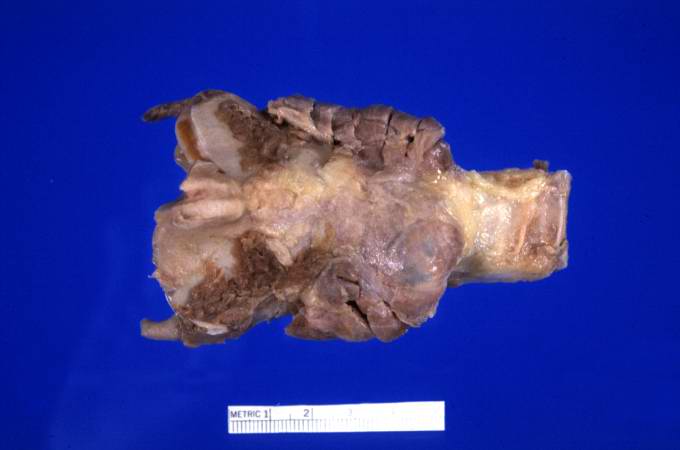
Microscopic Pathology
